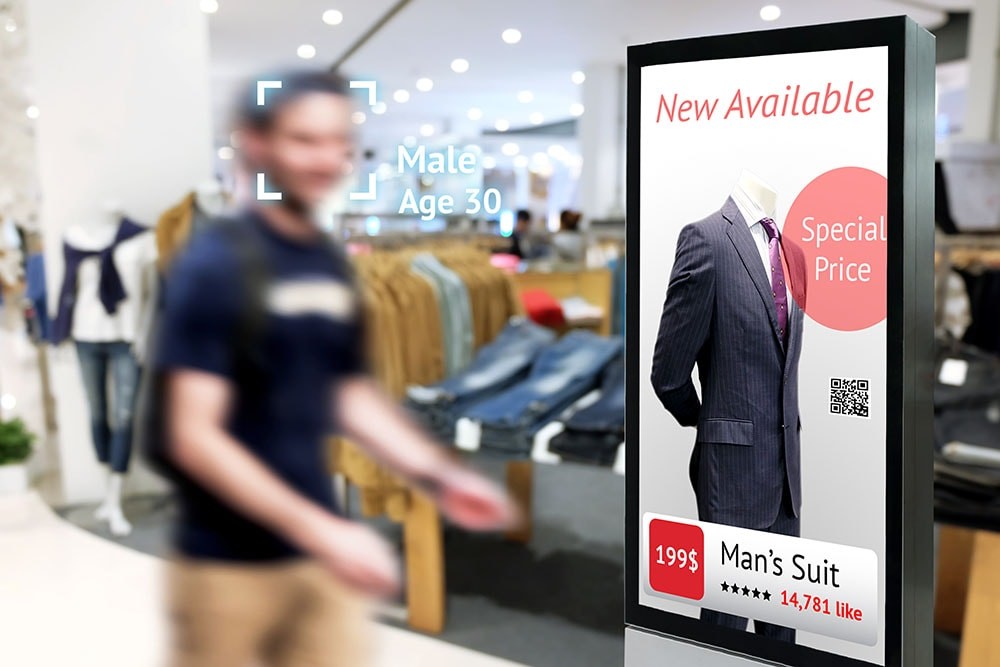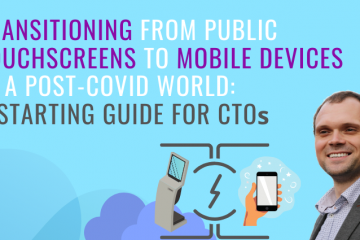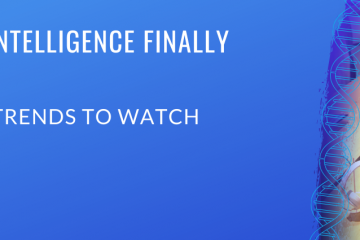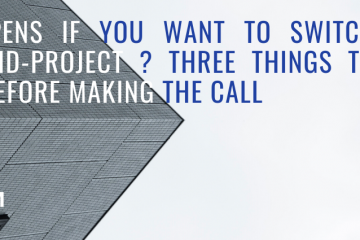The Facial Recognition Technology Is Known to Have Gained a Foothold in Many Industry Verticals and It Keeps on Continuously Charting New Ground. Odds Are Facial Recognition Apps Can Become a True Power Booster for What Is Now a Pretty Staid Area of Marketing, – Non-Digital Marketing
Facial Recognition has gained so much traction in an entire host of verticals and applications (according to Variant Market Research, its market is expected to be worth some $ 15.4 billion by 2024) that most anyone, regardless of the kind of business they are in, should look into whether the technology could come in handy in reaching their business objectives.
In part, this is owing to the ability of the Facial Recognition technology to better equip and advance the field of expertise known as Marketing, – something universal and of the utmost importance to most industries. Moreover, Face Recognition can make a dent in precisely those areas of Marketing, in which the now rampant Digital Marketing falls short, or is, simply, irrelevant. What are those areas, how much headway has been made already and what are the potentialities one should be aware of?
Looking to Develop a Robust and Well-Performing Face Recognition App?
The Marketing Functions the Facial Recognition Technology Can Support and Promote
One of the first occurrences of Face Recognition merging with Marketing took place at a company called Expedia, which provides one of the world’s most well-known online travel platforms. They smartly employed the Facial Recognition technology to create personalized travel experiences for their Hawaii-bound travelers. By using Face Recognition to determine the emotions that were invoked by the images of the various travel itineraries and spots in Hawaii, they began to identify those of them that resonated with a specific website visitor most.
Many similar uses of Facial Recognition for marketing-related emotional intelligence purposes are, certainly, possible within the Digital space. However, while the ability of the Facial Recognition technology to not only determine user emotions, but also influence buying decisions as part of a Digital Marketing strategy leaves no doubt and can, certainly, be further explored, the technology’s impact on what is referred to as brick-and-mortar retail can be far greater than it seems at first glance. In fact, in this area, Face Recognition can become one of the very few meaningful Marketing innovations we have seen in years, or, even, decades.
Facial Recognition in Brick-and-Mortar Retail and the Restaurant Business
Identifying the More Frequent Customers for Marketing Purposes
First and foremost, you can identify regular customers of your brick-and-mortar store (or is it a restaurant?) and offer them discounts or additional perks. This can help encourage customer loyalty both among those who have just visited your store a few (say 3-5 times) and those, who are more frequent visitors but don’t just bother to obtain or carry a discount card, and can be persuaded to obtain one and start visiting you on a more regular basis.

Determining How Suitable a Store or Restaurant Location Is for Business
By giving you the ability to count the actual number of customers, visiting each of your physical stores, a Facial Recognition app will enable you to identify the reason for sluggish sales, or, conversely, an uptake in your business, – it is just your store’s location, or are there any other factors (such as, for instance, your employees, working hours or branding) at play here?
Actually, Facial Recognition apps can be of immense assistance to the proprietors of supermarkets and restaurant chains even prior to when they set up store in a new location. When installed sufficiently in advace to when your business opens, such an app will tell you how suitable the public, visiting the spot, are for reaching your business goals. At the very least (although, there could be you will, simply, be able to understand if there are enough folks in the area at a certain hour of day or night to make the sales you anticipate.
Facilitating Product Promotion in Multiple Ways
The ability of Facial Recognition software to determine a person’s sex and age helps one adjust one’s product offering accordingly and makes the introduction of a new product less risky and more predictable in terms of this product’s further performance.
A more advanced Facial Recognition app, which is capable of identifying and measuring human emotions, can help you predict the sales of a product you want to introduce. You can order and expose only a very limited quantity of such a product and use it as a trial balloon, whereas without a Facial Recognition app in place the quantity you would have to order (especially, if it deals with multiple variations of the same product) would have to be much larger.
Cross-selling is one of the provenly more efficient techniques for achieving a sales increase. The Facial Recognition technology can enhance one of the more frequently used Cross-Selling Marketing vehicles, employed by companies that run chains of physical stores, – Basket Analysis.
With a Face Recognition app, sophisticated enough to support this, you can get a fix on the covert relationships that exist between the various products and that can be harnessed to boost those products’ sales. In plain talk, if you have Product A and Product B, you can determine whether the placement of these products next to or in the vicinity of one another can help achieve a sales increase. Similar to this, it is possible to identify products that, when placed together, seem to antagonize customers.
In principle, one can use Big Data, Data Mining and some other means of Artificial Intelligence to achieve the same ends. However, a Facial Recognition app can facilitate this process quite a bit, and, even, take it a notch higher. It can allow you to capture more complex, one-to-many relationships by not only glancing directly into the baskets and carts of your customers, but also by linking the contents of these baskets and carts to your different buyer personas.
In a nutshell, you can identify your visitor’s age and sex, follow them around the store, identify their buying patterns, take stock of how many of your visitors meet the description of this buyer persona, and, if it appears worthwhile to you, arrange your products in such a way, that this will encourage this part of your audience to buy more or will just keep them better satisfied.
Launching a New Product Overseas
If you are mulling over launching a product on an overseas market, and pricing this product seems to be difficult due to the absence of analogous products there, killing two birds with one stone seems like a possibility in this case. You can arrange for the product being exposed in several instances in several suitable selling environments, and gauge both your potential customer’s overall reaction and that to the price tag you will put on.
Incidentally, gaining an insight into your audience’s future reaction to you marking up your prices sometime in the near offing can also be an entirely feasible option.
Facial Recognition in Non-Digital B2B Marketing
Surprising as it may be, B2B Marketing would be just another area of Marketing to benefit from Face Recognition’s further rise.
For example, one budding use of the Facial Recognition technology many exhibition marketers are sure to fall in love with is capturing on camera visitors to an exhibition booth, and then determining their reaction to one’s exhibit or individual products (including with a view to approaching them, wherever possible, with an offer later).
It is possible to determine your visitors’ age, sex and the emotions your products invoke and use this information to gainfully modify or adjust otherwise your product offering.
You can also determine which of your exhibited products is likely to be more of a success, when released. You run a carpet factory? Hook up a Facial Recognition app while exhibiting your stuff, – some of those patterns will, most probably, not catch on, and it’s better to reconsider at an earlier stage your intention to launch these ones into production.
Is All This Possible Presently, and What Does One Need to Create a Facial Recognition App That Can Be Used for Marketing Purposes?
Finally and importantly, how realistic is all the above, given the current state of the Facial Recognition technology?
Well, while some of the above uses of Facial Recognition software may sound like a bit of sci-fi or far-fetched, as the developers of an advanced Facial Recognition application, we are certain that it is utterly possible to implement all the afore-mentioned functionality so, that it will be able to efficiently support all the above advanced Marketing functions.
In order to do so, you would need a highly professional and Computer Vision development team, whose composition may vary depending on the amount and degree of sophistication of the Face Recognition functionality that you want to include.
We believe that the minimum team configuration, required to develop a sufficiently powerful and feature-rich Facial Recognition application, should include 1 Mathematician (preferably, with a good command of statistical algorithms) with 1-2 years of related experience (this expert will work on the data models), 1 Data Engineer who has a good grasp and understanding of databases, and, at least, around 2 years of related experience, a Business Intelligence Analyst with at least 2 years of BIA experience, and (in the event that your Data Engineer cannot double in brass as a software developer) 1 Software Engineer with good Python (the more popular option we stick to as well in our Face Recognition-related development), С++, or Java development skills.
If you don’t want to loose the edge and stop innovating contact us now as Genium will power your teams and maintain high quality.
Images by
http://bit.ly/2TmJuun


